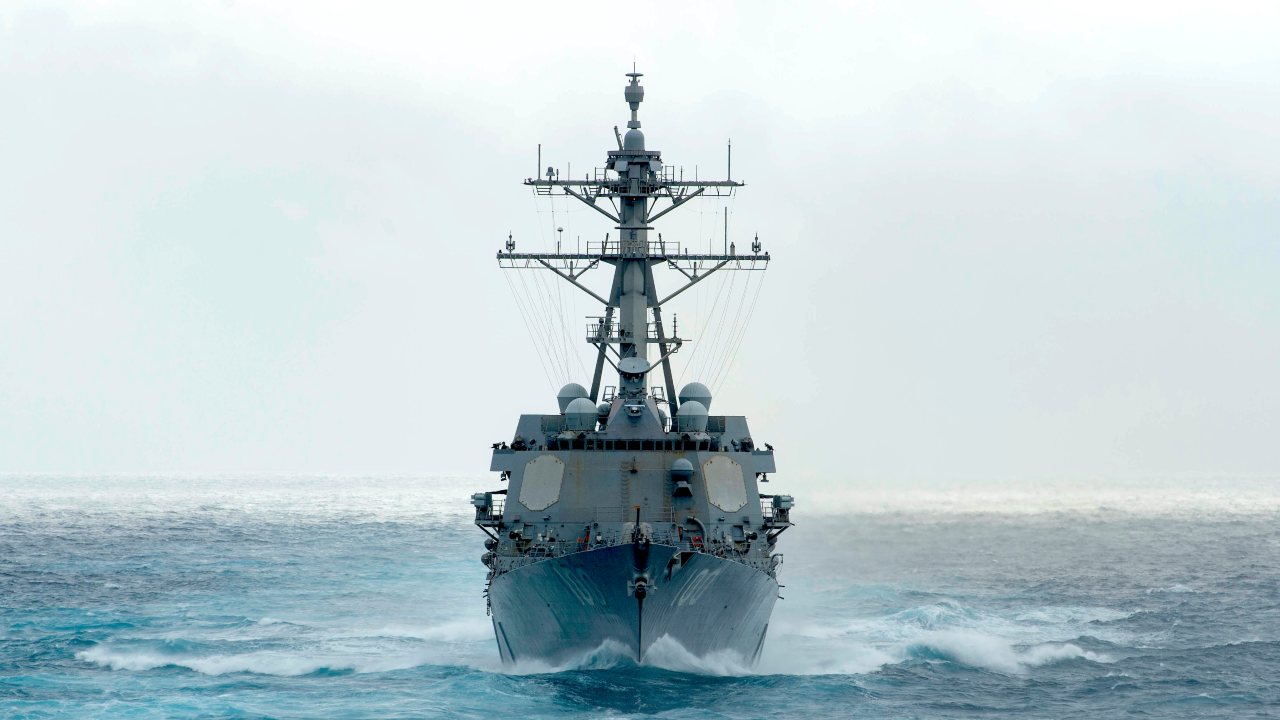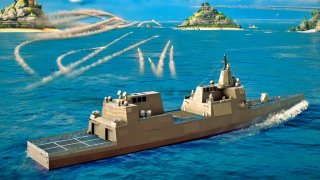The U.S. Navy's New DDG(X) Destroyer Is Not Based on Reality
Critiques of the DDG(X) program highlight the risk of investing in large, expensive surface warships in an era where underwater and unmanned systems might offer more strategic value.
Summary: Critiques of the DDG(X) program highlight the risk of investing in large, expensive surface warships in an era where underwater and unmanned systems might offer more strategic value. The past failures, such as the Zumwalt-class destroyers, serve as a cautionary tale of over-investment in problematic programs, suggesting that resources might be better allocated towards enhancing the submarine fleet and developing unmanned underwater vehicles (UUVs). This perspective challenges the conventional naval doctrine, proposing a strategic pivot towards undersea and unmanned capabilities as a more effective response to evolving global maritime threats and technological landscapes.
DDG(X) Looks Like Trouble
The Navy continues its quest to acquire expensive surface warships. By Fiscal Year 2032, the Navy plans to have purchased and produced several next-generation guided-missile destroyers, or DDG(X), to replace the Navy’s aging Ticonderoga-class Aegis destroyers. These warships usually perform important defensive functions for aircraft carriers when traveling as part of a carrier battle group. The Ticonderoga-class can also operate independently and have a history of showing the flag at key moments of geopolitical tensions around the world.
The Ticonderoga-class, aircraft carriers, and the next-generation guided missile destroyers are collectively referred to as “Large Surface Combatants” (LSC).
DDG(X): Procurement Problems
Since 2016, the US Navy has planned to increase its fleet size to around 355 ships. The DDG(X) will be a crucial part of that goal. Of course, these systems are highly expensive and take time to build.
Further, as the DDG(X) is being built, the Navy continues rapidly downsizing its existing fleet of Ticonderoga-class warships. Many Pentagon planners fear that this will create a period in which there are actually fewer available LSCs (despite the goal being to rapidly expand the LSC fleet).
This is because the current US defense industrial base is unbelievably sclerotic.
Already American defense manufacturers are having difficulty meeting increased demand for their goods in the greater threat environment of rising powers seeking to challenge (and usurp) America’s global dominance. The notion that the Navy wants to increase its fleet size at the same time it is rapidly decommissioning existing LSCs seems counterintuitive.
Of course, a greater question must be asked: is it even worth building these complex, expensive surface warships in the age of advanced and robust anti-access/area denial (A2/AD) systems?
The Navy and Congress insist upon it. The Ticonderoga-class Aegis Destroyers are aging out of service. They’ve had a good run. First procured by the Navy in FY1978, their production line ended by FY1984, and they’ve been in service since that time. Back in the 1990s and 2000s, it was assumed that the Navy’s newZumwalt-class destroyers would be the next-level replacement for these warships.
That was not to be.
The Zumwalt-class destroyers were a total disaster and a boondoggle for the taxpayers to boot. This forced the Navy to keep many of its older surface destroyers operational until the Pentagon could figure out how it was going to replace some of these aging LSCs, like the Ticonderoga-class. The Zumwalt fiasco did significant damage to the Navy’s budget and its readiness going into the 2020s.
Some of the Good
The DDG(X) does look like a promising LSC, though (if you think conventional; surface warships should continue being the main priority of the US Navy).
DDG(X) will possess “96 standard Vertical Launch Systems (VLS) cells, with an ability to incorporate 12 larger missile launch cells, in place of 32 of the 96 VLS cells. It is also to include two 21-cell Rolling Airframe Missile (RAM) launchers, and possibly also an ability to be built with an additional mid-body hull section, called the Destroyer Payload Module, that would provide additional capacity,” according to a recent report by the Congressional Research Service.

More importantly, the DDG(X) has a requirement that it must be capable of hosting future Directed Energy (DE) weapons. This is an important aspect of the DDG(X) that makes it somewhat more relevant to other Navy surface platforms. DE weapons will be key elements of any future surface warship fleet. In fact, DE weapons will be a critical element to overcoming the A2/AD systems that America’s enemies—notably China—have deployed to stunt conventional US Navy power projection near their shores.
Further, the DDG(X) will be able to carry larger missiles than its predecessors and more of them, which is a key feature, since any surface war will require platforms to operate with greater tactical depth (doing more with more for longer in combat than their predecessors). The only issue is that the DDG(X) seems to be at loggerheads with the Navy’s stated desire to make a surface fleet of smaller, more maneuverable, harder to kill warships. The DDG(X) is a large vessel.
Here's the Bad (and the Ugly)
Since much of the underlying technology of the DDG(X) is relatively new, is it possible that most of these systems will be unavailable for the bulk of the DDG(X)’s lifespan (thereby creating a real capabilities gap for the expensive new warship)?
In all, the DDG(X) sounds like a very interesting platform. Yet, it still misses the mark. In fact, it exacerbates all the Navy’s woes at a time when the Navy needs less problems, not more.
A better use of the funds and resources going into the DDG(X) program would be spent on enhancing America’s ailing submarine fleet and augmenting those capabilities by building robust unmanned underwater vehicles (UUV).
Face it, the age of large surface warships is over.
About the Author
Brandon J. Weichert, a National Interest national security analyst, is a former Congressional staffer and geopolitical analyst who is a contributor at The Washington Times, the Asia Times, and The-Pipeline. He is the author of Winning Space: How America Remains a Superpower, Biohacked: China’s Race to Control Life, and The Shadow War: Iran’s Quest for Supremacy. His next book, A Disaster of Our Own Making: How the West Lost Ukraine, is due October 22 from Encounter Books. Weichert can be followed via Twitter @WeTheBrandon.


